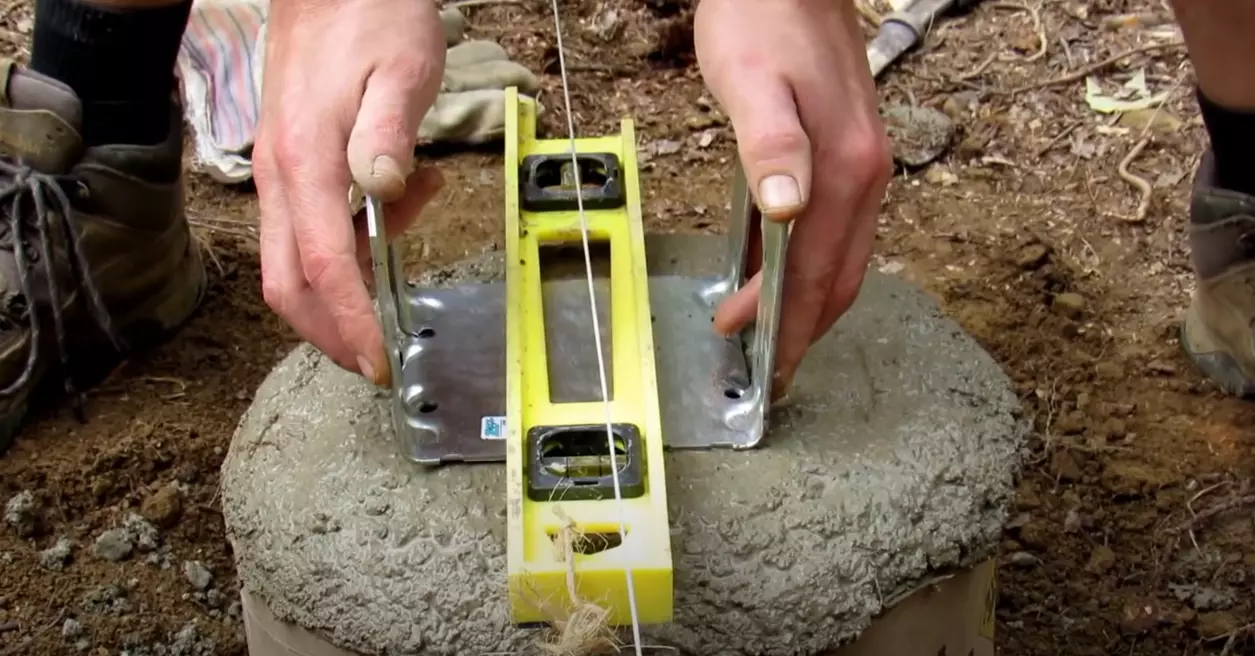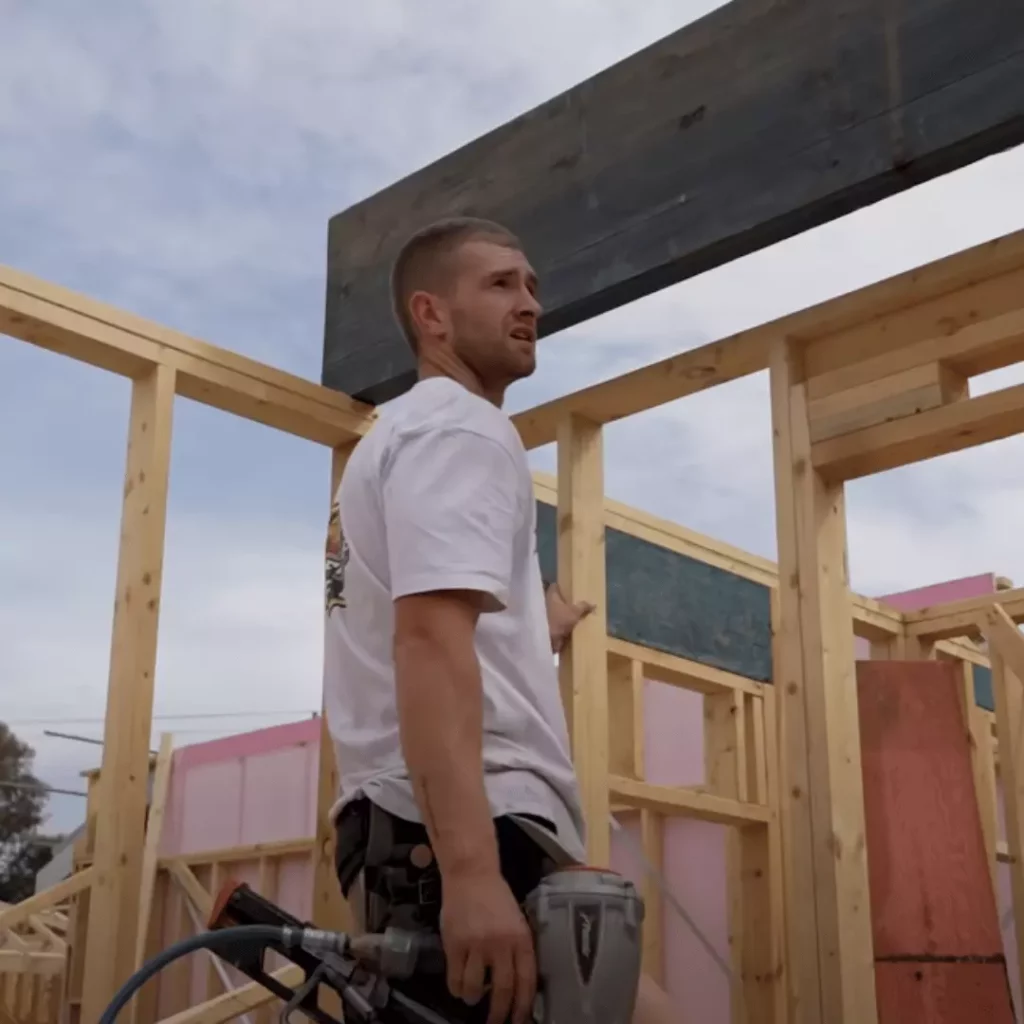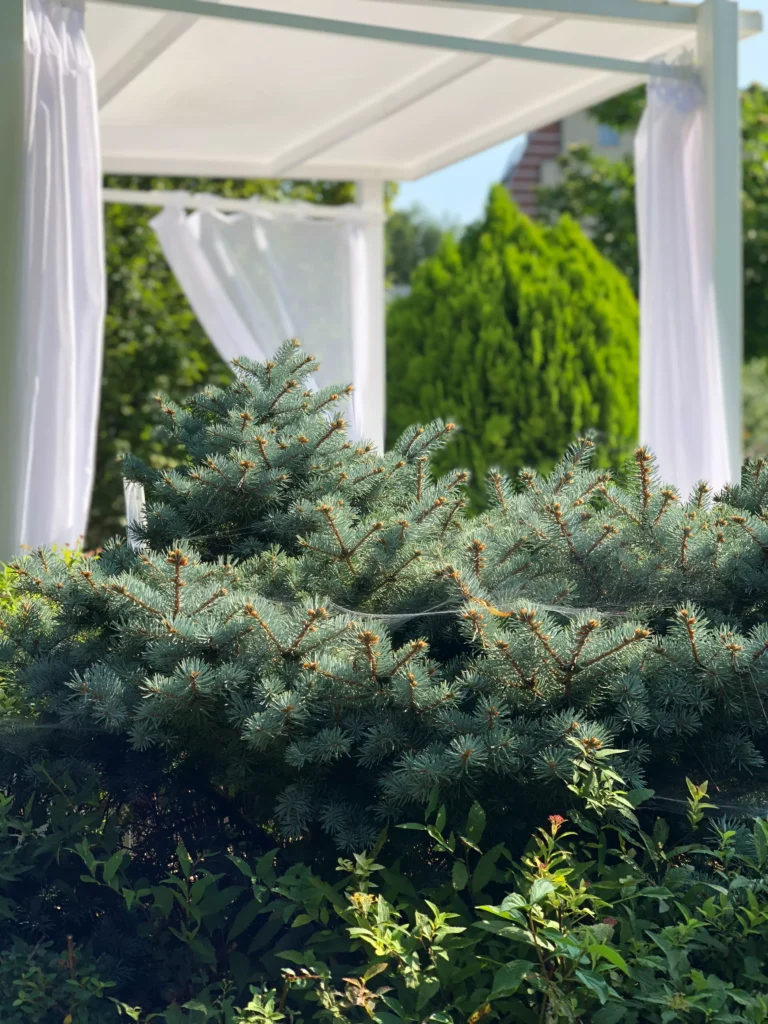Concrete footings for gazebo vary between clients based on the soil conditions, weather, local requirements, post mounts included with your gazebo, and what hardware you use.
Although most gazebos are put on top of existing gazebo decks such as wood decks, concrete slabs, or footers, some are also laid down in the gravel and sand foundation; for this reason, you will need a concrete footing to support your gazebo firmly on the ground.
We recommend having at least three to four inches of concrete slab for your gazebo footings. However, this might vary depending on the type of soil of your gazebo foundations, with loose soil requiring more excavation, increasing the depth, and the amount of concrete slab for your gazebo footings.
Types of Concrete Footings for Gazebos.
There are four types of concrete footings for gazebos that we mainly use to stabilize a gazebo firmly on the ground; they include; individual bases, which are expected, combined footings, strip footings, and mat foundation footings, each type of footing is recommended for different scenarios influenced by the kind of gazebo that you have, size of the gazebo, your soil type, local requirements and also the weight of your gazebo.
Individual Gazebo Footings.
We recommend installing individual gazebo footing (the most popular) if you have a mortarless gazebo foundation. A mortarless gazebo foundation is any foundation that uses compacted sand and gravel as its base rather than Concrete; we also recommend individual gazebo footings for paved gazebo foundations.
We recommend pulling up the pavers or excavating the foundations where the feet of the gazebo will be and putting a proper gazebo individual footing with depth.
To support the feet of your gazebo, you will need to install posts or feet supports in the individual gazebo footings; the footings required depend on the load and dimensions of your gazebo and also the depth and diameter of your gazebo footings, and the distance between each gazebo feet.
There are two ways to cast an individual gazebo footing, embed a feet support in the wet Concrete or embed your gazebo feet into the concrete footing. If you embed a feet support into the wet individual gazebo footing, you can use feet anchors such as BISupply Concrete Post Anchor, which is ideal for 4×4 gazebo feet made of wood or metal.
Best gazebo feet wet concrete anchor.
The BISupply Concrete Post Anchor contains a rebar spike that goes into the individual gazebo footing and also includes a U-shaped gazebo feet anchor that you can use to fit in your gazebo feet and use the predrilled holes to install screws in case of wooden gazebo feet or bolts for metal gazebo feet.

Combined Gazebo Footings.
We recommend combined footings if your gazebo foundation walls are close together; this is recommended for small gazebos where the feet are close together; the combined footings will share the load; some of the instances where we recommend combined gazebo footings are if your gazebo foundation is inclined, you are using heavy materials such as metal, or wooden walls that are thick and you require a strong foundation.
Some other factors that might lead you to install a combined gazebo footing include the type of soil; if your gazebo foundation has very loose soil, you can use combined gazebo footings; the weather is also a factor to consider; we do recommend using combined gazebo footings if your gazebo is exposed to extremely high winds, and you live in stormy affected regions, a combined gazebo footing will give you’re the support that you need in such instances.
Strip Gazebo Footings
Some other type of gazebo footings to consider includes strip footings; this type of footing is recommended for long foundations due to the extended length of the gazebo; you will use a strip gazebo footing to support the walls that run parallel to each other.
Mat Gazebo Footings.
A mat gazebo foundation is also referred to as a raft foundation; this is a footing that is equal to the side of the gazebo; its recommended for small and medium-sized gazebos and used when the foundation of your gazebo is extremely weak to use individual gazebos footings, combined gazebo footings or strip footings.
Using a mat foundation will help support the entire gazebo. In some instances, you can use a mat gazebo foundation to combine the labor and construct both the footings and the foundation or the floor of your gazebo on new grounds.
How do you install gazebo concrete footings?
Once you have decided the type of concrete gazebo footing that is right for you, you will then need to install it and generally involves the following process:
Excavation of Gazebo concrete footings.
You will need to excavate the area where the footings of your gazebo will be; the type of footings, load-bearing requirements, local building codes, and your foundation soil type will determine the excavation. After excavation, you must ensure the excavation is appropriately leveled and compacted before proceeding to the next steps.
Constructing the Framework of your Gazebo footing.
You will then need to construct a framework for your gazebo footing; for individual gazebo footings, you can use Sonotubes. For combined, strip, and mat gazebo foundations, you can construct the gazebo footing framework with wood, metal, or plastic; the Framework is supposed to hold the footing concrete in place until it dries.
Gazebo Footing Reinforcements.
If you are using combined, strip and mat gazebo foundations, you might require using reinforcement bars or mesh within your Framework; this will help strengthen your gazebo footing and prevent it from cracking or failing over time; the type of reinforcement you will choose depends on the size of the gazebo, the load of your gazebo, and your local building codes.
For individual gazebo individual footings, and in some cases, the combined, strip, and mat gazebo foundations, you can also use fiber concrete reinforcement; we recommend Bon Tools Concrete Fibers for concrete mix.
Best Fiberglass for gazebo footings concrete mix.
Pouring gazebo footing Concrete.
Before pouring your Concrete into the Framework, you will need to install your gazebo footings anchors. You will then need to mix the Concrete according to the manufacturer’s guidelines and pour the mixture into the Framework, making sure the gazebo feet anchors are held in the correct position and ensure the footing space is filled correctly; you can use a concrete vibrator, or a shovel to eliminate air pockets and voids in the formwork.
After pouring the Concrete, you should level the Framework using a trowel or float to create an even finish, depending on the height of your gazebo foundation.
Curing of gazebo footings.
Proper curing is crucial for the strength and durability of your gazebo footings, you should leave the formwork cure for seven to ten days, and you can cover the footings with a curing compound, wet burlap, or plastic sheeting to make sure the footings are curing correctly. In our gazebo footings, we use SAKRETE Cure ‘N Seal concrete for maximum hardness to the concrete formwork, especially on Mat Gazebo Footings.
Best Gazebo Curing Compound.
Removal of gazebo concrete footing Framework.
After seven to 10 days, when the formwork has adequately cured, you can remove the concrete Framework without damaging the footings, and the gazebo feet anchors; you should also make sure you are not disturbing the surrounding soil.
Last update on 2024-10-19 / Affiliate links / Images from Amazon Product Advertising API






